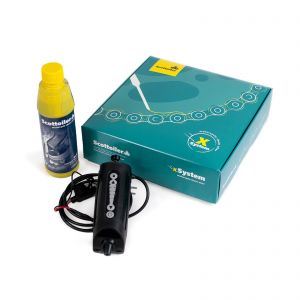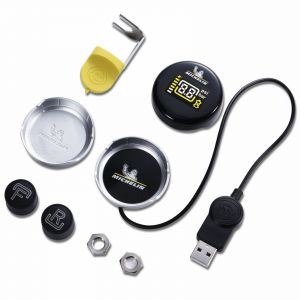Motorcycles and Bad weather - Looking After Your Bike
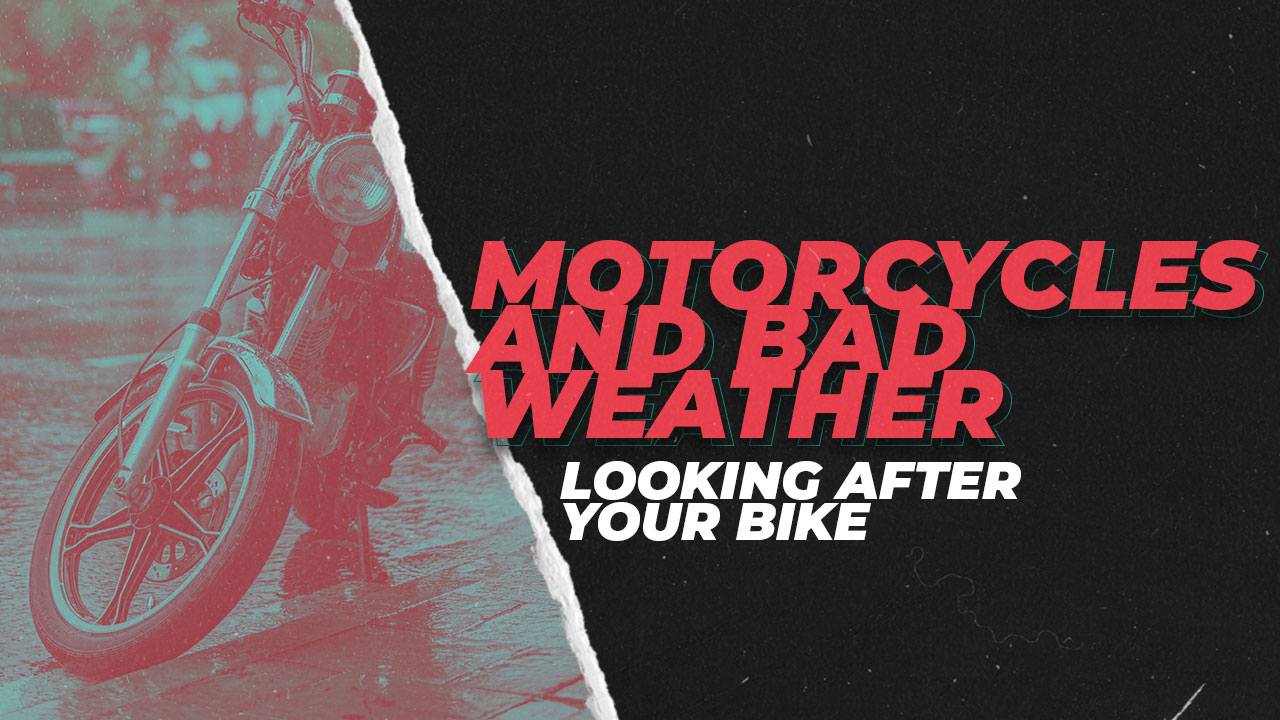
WINTER MAINTENANCE TASKS
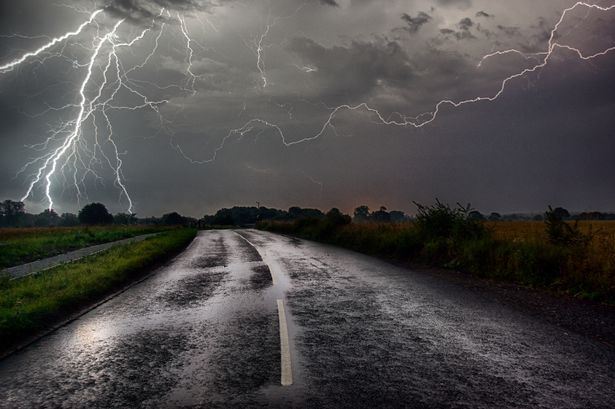
Riding through winter, particularly in bad weather, is nothing to fear if you are properly prepared for it, and this is especially important for those who ride most days, particularly when commuting with the madness of rush hours and school runs. There are many aspects to consider, one of which is keeping your bike well maintained. The last thing you want is to break down on a dark wet morning.
Maintaining your motorcycle is important whenever you ride, whatever the season and whatever the weather, but in cold and wet weather there are implications for certain parts of the bike that require the rider to give extra care and attention.
BATTERY:

Lead acid batteries suffer in the cold. If you notice the starter becomes sluggish as the temperature drops, and the bike is in regular use, check how old the battery is – the chances are it is older than you think and it is time to fit a new one. If the bike is not in regular use keep it fully charged using an intelligent charger designed for motorcycle batteries. Lithium batteries can get sluggish in the cold even when new – this is not a problem with the battery but a characteristic, and all you need to do is wake it up by leaving the ignition and lights on for a minute or two before starting the bike. Keep battery terminals clean and apply a dedicated battery terminal grease or petroleum jelly (Vaseline) to keep corrosion at bay – do not use a mineral grease.
BRAKES:
Keeping your brakes in top condition and making sure you have plenty of material on your pads is essential all-year round. In winter be extra wary of corrosion on the pad pin(s), and on the slider pins if you have a sliding type caliper. It is best to give each caliper a good clean and check before the bad weather sets in. Apply a smear of copper grease to the pad pin(s), and some silicone grease to the slider pins and rubber boots on sliding calipers, to keep corrosion at bay. If you use a performance or racing brake pad that is designed to operate at high temperatures consider fitting pads that are more suitable to normal or lower temperatures.
CHAIN AND SPROCKETS:
A Scottoiler reduces the burden of chain maintenance
Wet weather washes away the lubricant on the chain. Keeping your chain lubricated is essential and should be done more often in winter, and particularly after riding in the wet. A wet chain without protection will soon become rusty and could cause links to bind and kink, tightening the chain, sapping power and increasing wear. Using an automatic chain lubrication device such as a Scottoiler eliminates the need for extra maintenance and keeps the chain clean and constantly well lubricated. You do need to remember to check and refill the reservoir, but not nearly as often as you need to manually clean and lubricate a chain. Not everyone likes them but they do work well, extending the life of your chain and sprockets, and are worth the expense, especially if you are not very disciplined about maintenance.
COOLANT:
The coolant in liquid-cooled motorcycles is extremely important, and in winter of particular importance is the concentration of anti-freeze. You do not need to add extra, but you do need to make sure that there is enough. Motorcycles run a 50/50 mix of water and anti-freeze all year round, and this is enough to cope with all conditions. But sometimes a rider may top up with water rather than the correct pre-mix concentration, and this weakens the mix. If it gets too weak, it may not prevent the coolant freezing in sub-zero temperatures. When water freezes it expands, and this can have serious consequences on the cooling system. So check the concentration using an anti-freeze tester, they are not expensive, or drain the system and fill it up with new ready-mix coolant of the type specified by the bike’s manufacturer.
GENERAL LUBRICATION AND PROTECTION:
Give the bike a good clean, then lubricate the chain and apply a general protection spray all over, avoiding the brake components and tyres – there are many protective sprays available, some that can be applied generally all over and some that are dedicated to specific areas of the bike. Select the ones that best suit your needs and bike and follow the instructions on the can. It is also a good idea to lubricate moving parts such as brake and clutch levers, gearchange linkages, and stand pivots, and to do this it is best to remove them so all dirt and old lubricant can be cleaned off before applying fresh lube. Lubricating throttle and clutch cables is also a good idea, unless you have a type that shouldn’t be lubricated (your handbook may tell you), and a cable oiler makes this task easy.
Avoid using a high-pressure jet wash to clean the bike as it is easy to blast water past the seals for the wheel bearings, steering head bearings and suspension linkage bearings and wash the grease away. Once this happens the seals will continue to let water and dirt in and this will eventually lead to bearing failure and a lot more work. Dedicated motorcycle washers such as the Muc-Off pressure washer work on a lower pressure and are said to be seal-friendly.
LIGHTS:
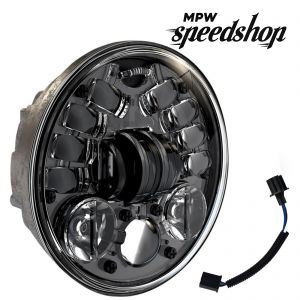
See and be seen
Riding in the dark is often a necessity in winter, even if you don’t like it, and the one thing that improves the experience and boosts confidence is having good headlights. LED lighting is becoming normal equipment on many new bikes, but for those who ride bikes with conventional halogen bulbs in average quality headlights with dulled reflectors the amount of light emitted is often lacking. There are ways of addressing and improving this.
One is to fit an uprated bulb, and there are many different types to choose from, some that work well and some that make very little difference. It is best to go with a name you can trust, such as Phillips, that is backed up with genuine reviews from reviewers you can trust, and to select the bulb that best meets your needs. If your headlight is old fit a new one so you have a new and bright reflector, and couple that with an uprated bulb. Another option is to ditch the conventional headlight and fit an after-market LED one. There are many to choose from and prices to suit all budgets. You can also replace the halogen bulb in a conventional headlight with an LED bulb, but be warned that doing so could result in an MOT fail if you get an unfriendly tester, so it might be wise to change it back when the MOT is due. When selecting a new lighting option be sure to check and compare specs as LED lights are often rated using Lumens and Kelvin rather than the good old wattage of a halogen light.

LUMENS: How much light there is.

KELVIN: The colour or temperature of the light.
Whatever headlight you have, keep it clean. And that goes for your taillight, indicators and spotlights as well. However many lumens or kelvins you have their effectiveness will be reduced by a barrier of dirt. Keep your mirrors clean as well.
Another consideration when riding in the dark and wet, particularly in the face of oncoming headlights, is the condition and quality of your visor. If it is scratched get a new one. If it is dirty clean it before you depart and keep it clean while you ride – there are various products such as Visorcat that enable you to do this. If you steam up use an anti-mist product, or better still fit a Pinlock visor.
SUSPENSION:
Suspension components, particularly those at the rear, are very susceptible to the spay and dirt coming up off the road. You need to keep the fork inner tubes clean and corrosion-free, and one excellent way to do this on standard forks is to fit a gaiter. Unfortunately for those with USD forks this is not an option. The use of a hugger at the rear can help to reduce the amount of splash onto your shock absorber and fitting a shock shield or shock tube will keep it clean and dry. Fender extenders also help to reduce the amount of spray, and on the front help to keep the engine, exhaust and radiator clean. If your bike has a linkage system between the swingarm and the shock the pivots will usually have greased bearings with seals to protect them. These seals deteriorate over time and eventually let water in that washes the grease out. Bounce the rear of the bike and check for any grating noises, and visually inspect the linkage for evidence of rust or seal failure. The linkage bearings should be regreased as part of your routing maintenance whatever conditions you ride in, and when you do this you fit new seals, so if this hasn’t been done for a while autumn is as good a time as any to do it. This also applies to swingarm bearings.
TYRES:
Having sufficient tread to deal with wet roads and lying water is of paramount importance, and now is the time to check your tyres and if necessary to fit some new ones. A tyre with a high silica content improves grip in the wet . Different tyres have different compounds that create maximum grip at different temperatures, and fitting tyres that have better grip in colder temperatures is something to consider if you currently have sporty rubber and normally ride hard in the summer - in the winter those tyres will not reach their optimum temperature and won’t have the levels of grip that you are used to.
Michelin's TPMS
Checking tyre pressures is something that needs to be done regularly all year round, and in winter it is important to remember that as temperature drops so does the pressure in your tyres. The temperature is often at its lowest first thing in the morning, and if this is when you ride to work you must set your tyre pressure to be accurate for this time of day – it is no good checking and setting pressures in the middle of a nice day at the weekend if there is a big temperature difference first thing Monday morning. The use of a tyre pressure monitoring system such as the Michelin TPMS takes the strain out of constantly checking using a gauge and alerts you to the need for some more air.
WINTER MAINTENANCE PRODUCTS:
Batteries – Atom, Motobatt, Powerite
Battery chargers - Motobatt
Brake pads – EBC, Goldfren, SBS
Chain lube – Motorex, Motul, Scottoiler, WD40
Cleaning, protection, and lubrication – Guy Martin, Motorex, Motul, Muc-Off, R&G, Scottoiler, WD40, Wurth
Coolant – Motorex, Motul, Yamalube
Covers – MPW, R&G, Rainguard, Tucano Urbano
Fender extenders, huggers, shock shields, shock tubes – Pyramid, R&G
Tyres – CST, Dunlop, Maxxis, Michelin
To see the full range of products available from MPW browse the motorcyclepartswarehouse shop.
